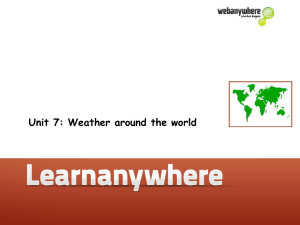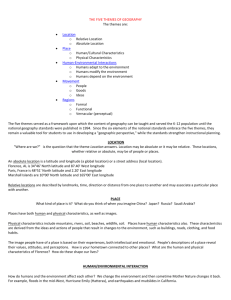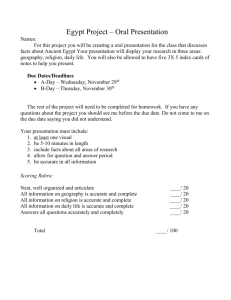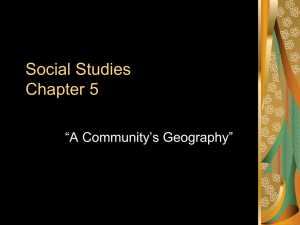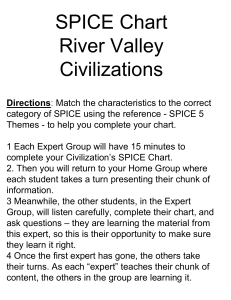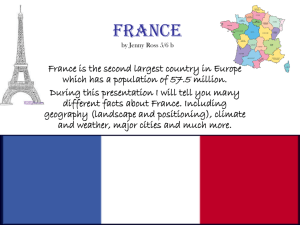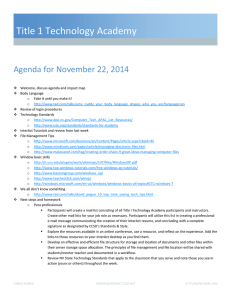Content Map of Unit
advertisement
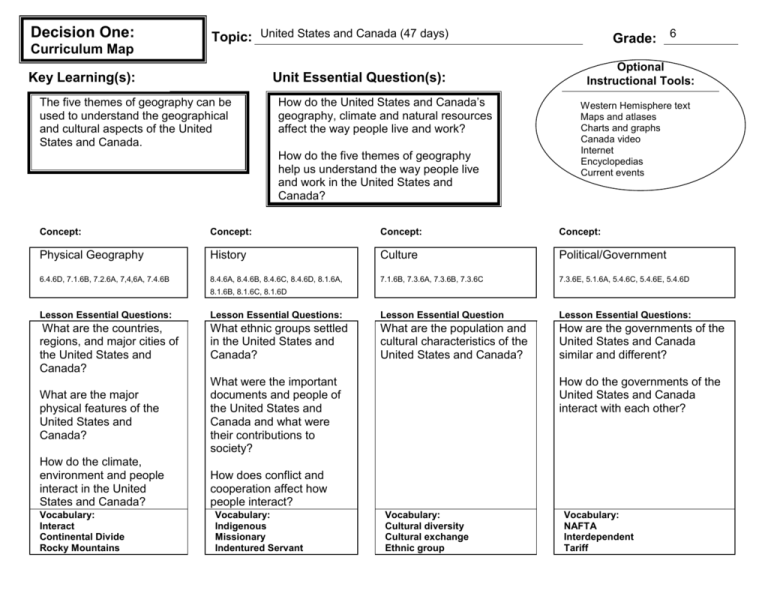
Decision One: Curriculum Map Topic: United States and Canada (47 days) Key Learning(s): Unit Essential Question(s): The five themes of geography can be used to understand the geographical and cultural aspects of the United States and Canada. How do the United States and Canada’s geography, climate and natural resources affect the way people live and work? How do the five themes of geography help us understand the way people live and work in the United States and Canada? Grade: 6 Optional Instructional Tools: Western Hemisphere text Maps and atlases Charts and graphs Canada video Internet Encyclopedias Current events Concept: Concept: Concept: Concept: Physical Geography History Culture Political/Government 6.4.6D, 7.1.6B, 7.2.6A, 7,4,6A, 7.4.6B 8.4.6A, 8.4.6B, 8.4.6C, 8.4.6D, 8.1.6A, 7.1.6B, 7.3.6A, 7.3.6B, 7.3.6C 7.3.6E, 5.1.6A, 5.4.6C, 5.4.6E, 5.4.6D 8.1.6B, 8.1.6C, 8.1.6D Lesson Essential Questions: Lesson Essential Questions: Lesson Essential Question Lesson Essential Questions: What are the countries, regions, and major cities of the United States and Canada? What ethnic groups settled in the United States and Canada? What are the population and cultural characteristics of the United States and Canada? How are the governments of the United States and Canada similar and different? What are the major physical features of the United States and Canada? How do the climate, environment and people interact in the United States and Canada? Vocabulary: Interact Continental Divide Rocky Mountains What were the important documents and people of the United States and Canada and what were their contributions to society? How do the governments of the United States and Canada interact with each other? How does conflict and cooperation affect how people interact? Vocabulary: Indigenous Missionary Indentured Servant Vocabulary: Cultural diversity Cultural exchange Ethnic group Vocabulary: NAFTA Interdependent Tariff Appalachian Mountains Laurentian Highlands Death Valley Great Lakes St. Lawrence River Mississippi River Glaciers Rain shadow Tundra Permafrost Prairie Desert Scrub Deciduous forests Coniferous forests Hydroelectricity Agribusinesses Alluvial Mackenzie River Great Slave Lake Great Bear Lake Hudson Bay Plantation Boycott Revolutionary War Declaration of Independence Louisiana Purchase Manifest Destiny Industrial Revolution Abolitionist Reconstruction Segregate Homestead Act Cold War Civil Rights Movement Dominion Bilingual Reservation/Reserve Commute Megalopolis Population density Industrialization Petrochemical Sunbelt Recession Mixed-crop farm Corporate farm Forty-niner Mass transit Free trade Other Information: Concept: Concept: Concept: Concept: Lesson Essential Questions: Lesson Essential Question Lesson Essential Questions: Economics 7.3.6D, 6.4.6C, 6.4.6E, 6.2.6L, 6.4.6G Lesson Essential Questions: How are the economies of the United States and Canada the same and how are they different? How do the natural resources affect the economies of the United States and Canada? What are the major imports, exports and who are the trading partners of the United States and Canada? Vocabulary: Economics Trade Import Export Natural resources Capitalism Other Information: Vocabulary: Vocabulary: Vocabulary:





